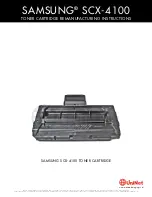
Chameleon Pro - Master Device Manual
Copyright © LucidPort Technology, Inc.
485 E. Evelyn Ave., Sunnyvale, CA 94086
Tel: (408)720-8800 Fax: (408)720-8900
www.lucidport.com
Page 10
Users are allowed to change their password. The Master can require password complexity in
Users’ passwords. If password complexity is required, the User password must contain a
minimum of 6 characters, and must contain at least one number and one letter.
User passwords do not prevent the Master from accessing data encrypted by its Users.
4.1.3
PC Lock
Unplugging the Chameleon device protects your sensitive data, but open documents, network
connections, and email may still be vulnerable. PC Lock automatically locks the Windows
session whenever the device is removed. The user must enter the Windows password to log
back into the Windows session.
A Master has the option of requiring its User to enforce PC Lock.
4.1.4
AutoLogin
Chameleon Autologin is the opposite of PC Lock: if enabled, you can log-in to Windows simply
by plugging in the Chameleon device (see “11 AutoLogin” for more details).
A Master has the option of forbidding its User from using AutoLogin.
4.1.5
Pagefile Encryption
Windows may store temporary data in its paging file (virtual memory). This file is usually
unencrypted, appearing as a jumble of characters that is updated continuously. Enable pagefile
encryption to direct Windows to encrypt its paging file. Encrypting the paging file eliminates a
potential security hole, but slows the computer down slightly. Only Windows 7 supports page
file encryption (ignored for other operating systems). Masters can program Users to require
pagefile encryption.
4.2 User Logs
The “History” tab displays the list of User devices that have been created. This information is
stored in an unencrypted text file in the ChameleonDrives directory
(C:\ChameleonDrives\UserLog.csv). It lists the User devices the Master created, their creation
date, User ID, description, and other settings.













































